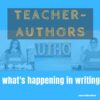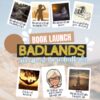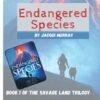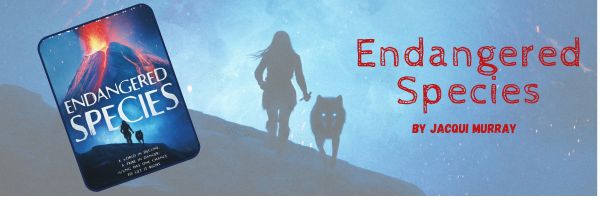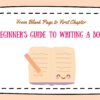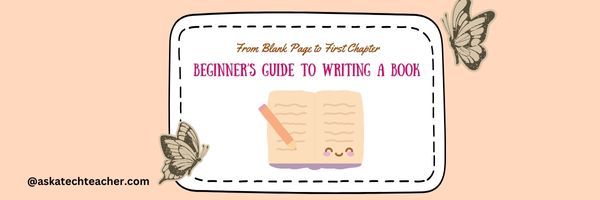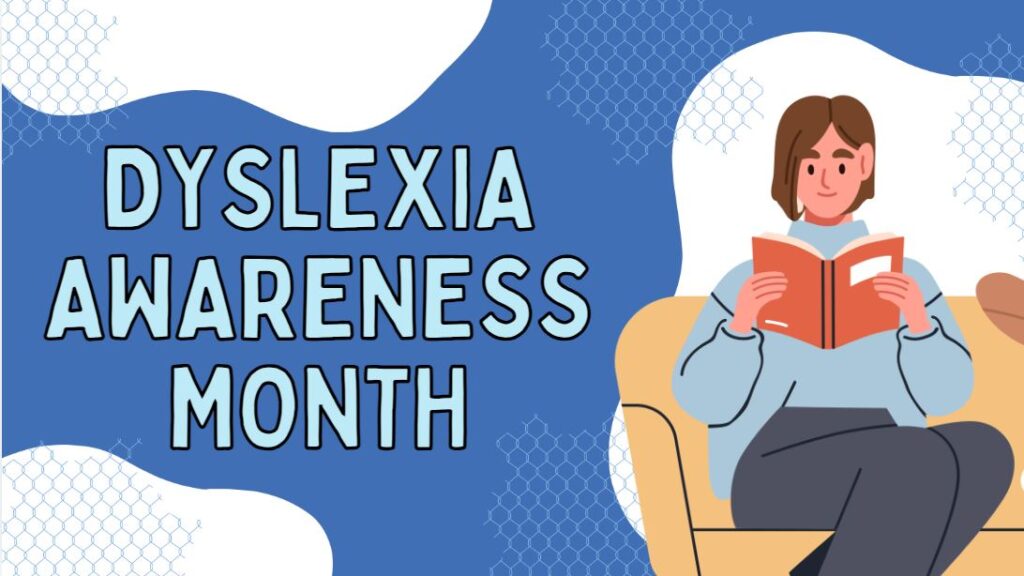Category: Teacher-author
Teacher-Authors: What’s Happening on my Writer’s Blog
In this monthly column, I share the most popular post from the past month on my writing blog, WordDreams, for the teacher-authors in the group:
My virtual book tour to introduce my latest prehistoric fiction, Badlands, Book 2 of the trilogy, Savage Land, has finally ended. I am thrilled with the wonderful support from so many readers and authors! It was much more complicated than any prior book launch and not without mistakes on my part (some of you know what I’m talking about). But I met lots of new readers and writers and remain convinced that blog hops are a great way to introduce new books.
I launched my first Indie book, To Hunt a Sub, via a blog hop because I didn’t know what else to do. It worked well enough (there’s a learning curve) that I used the same approach for each of my subsequent books.
If you’re thinking of doing the same, take note:
- It requires an active blog (opening a blog for purposes of a blog hop doesn’t work well–I’ve seen it tried)
- It requires aggressive participation in hosts’ posts by interacting with visitors
- It requires that you pay lots of attention to visitors and commenters on your own blog posts leading up to the launch
Why a blog rather than Facebook or an online event? I really have no success with any social media other than blogs. I can’t think of the last time I had a new subscriber to my FB or Twitter account.
- If the goal was to get noticed, it worked. I received awards for the Top New Release in Biographical Fiction and later, in Classic Historical Fiction. Those lasted a few days, each
- I also received over 35 reviews, many attributable to the blog hosts, others to KU exposure. There were some spirit-lifting comments like this one that absolutely made it all worth it:
Jacqui Murray does a masterful job of blending prehistoric history with real life events. The emerging human civilization with its daily challenges of finding food and shelter against a wild and unpredictable environment is amazing. … A fantastic thriller. –Grace Blair (more…)
Share this:
- Click to share on Facebook (Opens in new window) Facebook
- Click to share on X (Opens in new window) X
- Click to share on LinkedIn (Opens in new window) LinkedIn
- Click to share on Pinterest (Opens in new window) Pinterest
- Click to share on Telegram (Opens in new window) Telegram
- Click to email a link to a friend (Opens in new window) Email
- More
Teacher-Authors: What’s Happening on my Writer’s Blog
A lot of teacher-authors read my WordDreams blog. In this monthly column, I share the most popular post from the past month:
What Should You Know About Interactive Storytelling?
Here’s what I cover:
- What is it?
- How can writers use it?
- Advantages
- Disadvantages
What is interactive storytelling
Interactive storytelling is a growing trend that allows readers to actively participate in shaping the narrative. With advancements in augmented and virtual reality, stories are no longer confined to the pages of a book. Authors can provide immersive experiences and create narratives that respond to reader choices.
Interactive storytelling allows the audience to actively shape the story rather than passively consume it. Unlike traditional storytelling with a fixed plot, interactive stories let users influence the direction, outcomes, and details through their choices and input. It blends creativity with technology, making each telling unique. 81% of marketers agree interactive content grabs attention more effectively and 66% admit it increases audience engagement. I can attest to this popularity. As a teacher, I occasionally asked students to choose from among several story endings or create their own. A good example is Mission USA, a website that uses interactive storytelling to teach historic events such as the American Revolution, Civil Rights, the Great Depression, and more:

Students click into one of the stories and are asked to make decisions similar to those made during that time period and then experience the consequences of their choices–whether the Loyalists or Tories won, how a family survived (or didn’t) the Great Depression, or something else. Here’s a video to explain it:
[youtube https://www.youtube.com/watch?v=Kb_te-MmM04?si=v9ZG8x8n6TjCGMgk]
Another example many will remember is Oregon Trail where participants were expected to stock their Conestoga wagon to head to the Oregon territories (or California). Along the way, they made decisions such as whether to purchase mules vs. oxen, how to ford a river, how to cure diseases and injuries, and more. Their selections ultimately determined if they survived.
How can writers use interactive storytelling
Share this:
- Click to share on Facebook (Opens in new window) Facebook
- Click to share on X (Opens in new window) X
- Click to share on LinkedIn (Opens in new window) LinkedIn
- Click to share on Pinterest (Opens in new window) Pinterest
- Click to share on Telegram (Opens in new window) Telegram
- Click to email a link to a friend (Opens in new window) Email
- More
Teacher-Authors–Join me to launch my Indie Book
Starting tomorrow, on my writer’s blog, WordDreams, my wonderful efriends are helping me launch my latest prehistoric fiction, Badlands. Early reviews…
“Your best ever”–husby (you say he said the same thing last time? I don’t remember)
“…prehistoric man takes on nature in all her fury and survives.” –Sandra Cox

I’ll be visiting writer friend blogs April 15-26th. We’ll chat about Badlands and writing in general. Here are articles you can read in alphabetic order. The first are about the Neanderthal world and the last few writerly topics:
- Neanderthal Doors
- Neanderthal Healing Tips
- Neanderthal nomadic life
- How to research prehistory
- What I Learned from my Neanderthal Characters
- 8 Bits of Life Wisdom From My Computer
- 10 Things You Probably Don’t Know About Me Park II
Here’s the schedule of who I’ll visit when:
April 15: Sally Cronin–Spotlight
April 16: Life of a Neanderthal Nomad–Liesbet Collaert
April 17: 8 Bits of Life Wisdom From My Computer–Chris?
April 18: 10 Things You Probably Don’t Know About Me Part II–Sandra Cox
April 19: What I Learned from my Neanderthal Characters?–Liz Gauffreau
April 21: Prehistoric research–Alex Cavanaugh
April 22: Miriam Hurdle–Spotlight
April 23: Anneli Purchase–Spotlight ???? Confirm that
April 24: Healing Tips from Neanderthals–Colleen Chesebro
April 25: Neanderthal doors–Dan Antion
April 26: Lynette d-Arty-Cross–Spotlight?
Each day, I’ll post a short introduction to the host. It’ll include a link to their blog.
Badlands by Jacqui Murray,
Book 2 in the Savage Land trilogy
Book 8 in the Man vs. Nature series
Editor: The extraordinary Anneli Purchase
Amazon Universal link http://a-fwd.com/asin=B0DFCV5YFT
To celebrate the launch of Badlands, Book 1 in the trilogy, Endangered Species, will be
FREE on Amazon Kindle April 15-20, 2025
If you miss the freebie, all of my prehistoric fiction is on KU which makes it free to KU readers all the time.
“The content presented in this blog are the result of creative imagination and not intended for use, reproduction, or incorporation into any artificial intelligence training or machine learning systems without prior written consent from the author.”
Jacqui Murray is the author of the popular Man vs. Nature saga, the Rowe-Delamagente thrillers, and the acclaimed Building a Midshipman, the story of her daughter’s journey from high school to United States Naval Academy. She is also the author/editor of over a hundred books on integrating tech into education, adjunct professor of technology in education, an Amazon Vine Voice, and a freelance journalist on tech ed topics. Look for her next prehistoric fiction, Balance of Nature, Winter 2026
Share this:
- Click to share on Facebook (Opens in new window) Facebook
- Click to share on X (Opens in new window) X
- Click to share on LinkedIn (Opens in new window) LinkedIn
- Click to share on Pinterest (Opens in new window) Pinterest
- Click to share on Telegram (Opens in new window) Telegram
- Click to email a link to a friend (Opens in new window) Email
- More
Teacher-Authors: What’s Happening on my Writer’s Blog
A lot of teacher-authors read my WordDreams blog. In this monthly column, I share the most popular post from the past month here. If you follow WordDreams, you may have already seen this:
Share this:
- Click to share on Facebook (Opens in new window) Facebook
- Click to share on X (Opens in new window) X
- Click to share on LinkedIn (Opens in new window) LinkedIn
- Click to share on Pinterest (Opens in new window) Pinterest
- Click to share on Telegram (Opens in new window) Telegram
- Click to email a link to a friend (Opens in new window) Email
- More
Teacher-Authors: What’s Happening on my Writer’s Blog
A lot of teacher-authors read my Ask a Tech teacher. In this monthly column, I share a popular post from the past month from my writing blog, WordDreams
Good efriend Terri Webster Schrandt reminded me of National Love Your Pet Day last year on her blog, Sunday Stills. I’ve waited all year to add my own celebration!
According to National Today Calendar, February 20 is Love Your Pet Day. As if we need only one day to love our pets.
“On February 20, we celebrate National Love Your Pet Day, a day to embrace one special trait that makes us human: our love of our pets! There are many things that differentiate humans from the rest of the animal kingdom, but one of the more unusual behaviors is our longstanding tendency to keep other animals as pets. Gallup reports that sixty percent of Americans are current pet owners.”
To celebrate, here’s my slideshow of my dog, Casey. Feel free to attach links to your beautiful pets in the comments so we can visit!
Share this:
- Click to share on Facebook (Opens in new window) Facebook
- Click to share on X (Opens in new window) X
- Click to share on LinkedIn (Opens in new window) LinkedIn
- Click to share on Pinterest (Opens in new window) Pinterest
- Click to share on Telegram (Opens in new window) Telegram
- Click to email a link to a friend (Opens in new window) Email
- More
Teacher-Authors–#BookBlast for my latest Prehistoric Fiction
This post has little to to with technology in the classroom but a lot to do with the launch of my latest prehistoric fiction, Endangered Species, Book 1 of the trilogy, Savage Land. Join the Blog Hop over at my writer’s blog, WordDreams!
Curious? Not sure you want to invest your time yet? Here’s the trailer:
Alright! Here’s what’s going on:

I’ll be visiting writer friend blogs January 6-26, 2025, and then continue with the occasional “I’m Traveling” visits throughout 2025. We’ll chat about Neanderthals, early man, Endangered Species, and writing in general. Here are articles you can read in alphabetic order: (more…)
Share this:
- Click to share on Facebook (Opens in new window) Facebook
- Click to share on X (Opens in new window) X
- Click to share on LinkedIn (Opens in new window) LinkedIn
- Click to share on Pinterest (Opens in new window) Pinterest
- Click to share on Telegram (Opens in new window) Telegram
- Click to email a link to a friend (Opens in new window) Email
- More
Teacher-Authors: What’s Happening on my Writer’s Blog
A lot of teacher-authors read my WordDreams blog for writers. In this monthly column, I share the most popular post from the past month here.
In my prehistoric fiction, my characters must squat because sitting in chairs didn’t become popular until about 4,000 BCE and my current trilogy takes place 75,000 BCE. To my surprise, a lot of readers had comments about this. If you have time, click through to the original article and check out what they had to say! (more…)
Share this:
- Click to share on Facebook (Opens in new window) Facebook
- Click to share on X (Opens in new window) X
- Click to share on LinkedIn (Opens in new window) LinkedIn
- Click to share on Pinterest (Opens in new window) Pinterest
- Click to share on Telegram (Opens in new window) Telegram
- Click to email a link to a friend (Opens in new window) Email
- More
From Blank Page to First Chapter: A Beginner’s Guide on How to Start Writing a Book
Ask a Tech Teacher is officially on Thanksgiving break so I’m going to pop in here with two posts from our international team that just couldn’t wait:
-
From Blank Page to First Chapter: A Beginner’s Guide on How to Start Writing a Book-–for the teacher-authors following Ask a Tech Teacher, a how-to primer on writing the book that rattles around in your head (see below)
- Top 5 Game Development Platforms for Young Coders: Building Skills with Fun–perfect for those still doing Hour of Code in December (click here after 11-26-24)
From Blank Page to First Chapter: A Beginner’s Guide on How to Start Writing a Book
The truth is, many of us dream about writing a book, but we stop ourselves because we think we lack experience or don’t know where to start. Here’s the secret: no one starts as an expert. Whether you’re an educator hoping to inspire others, a student exploring creativity, or simply someone with a tale to tell, this guide is here to show you that the hardest part—getting started—isn’t as scary as it seems.
We’ll break it down into small, achievable steps, from brainstorming ideas to turning them into something tangible. Ready to take that first leap? Let’s begin your journey to becoming a writer.
[caption id="attachment_70524" align="aligncenter" width="300"] Photo by Glen Noble on Unsplash[/caption]
Photo by Glen Noble on Unsplash[/caption]
Embrace Your Inner Storyteller
Think about what sparks your desire to write. Are you an educator who wants to turn classroom experiences into a guide for others? A parent with stories to inspire your kids? Whatever your reason, it’s valid—and it’s the fuel that will keep you going.
Identify your audience
Are you writing for fellow teachers? Students? A general audience? For example, if you’re writing for educators, your book might blend personal anecdotes with actionable tips. Writing for students? Maybe you’ll create relatable stories that inspire them to dream big. Your audience shapes the tone, structure, and even the language of your book.
Find your voice
Don’t worry about sounding “perfect” or “writerly.” Instead, focus on authenticity. Are you humorous, empathetic, or straight-to-the-point? Let that shine through—your readers will thank you for it.
The Idea Phase—Where Do Stories Come From?
Inspiration doesn’t have to be dramatic. It might be something simple, like a funny interaction with a student, a challenge you overcame, or a lesson that stuck with you. Even mundane experiences can become meaningful when viewed through the right lens. The key is to turn your raw inspiration into a clear, actionable theme. If you’re more of a visual thinker, try mind mapping—grab a piece of paper, write your main idea in the center, and branch out with related thoughts.
[caption id="attachment_70525" align="aligncenter" width="300"] Photo by Debby Hudson on Unsplash[/caption]
Photo by Debby Hudson on Unsplash[/caption]
Crafting Your Blueprint
Before writing, take some time to sketch out the structure of your book. Think of chapters, key points, and takeaways for your readers. If outlining feels overwhelming, start with a simple method.
For example, if your book is about engaging students in creative ways, your outline might include chapters like Understanding Student Motivation and Practical Classroom Strategies. Over time, you can add details and expand on these topics.
Technology makes outlining a breeze. Apps like Scrivener or Plottr allow you to visualize your book’s structure, rearrange sections easily, and even track your progress. If you prefer pen and paper, sticky notes on a wall can give you a physical view of your chapters, which is especially helpful when tackling how to start writing a book.
Writing Without Fear
Once your outline is ready, it’s time to do what you’ve been waiting for—start writing. For many beginners asking how to start writing a book with no experience, this step feels the most intimidating. But remember, no one writes a perfect first draft. The goal is progress, not perfection.
Fear is often the biggest obstacle to writing books. Many first-time writers worry about things like “What if it’s not good enough?” Here’s the truth: every writer, even bestselling authors, has faced these fears. The trick is to silence that inner critic during the first draft. Focus on writing one paragraph or one scene at a time. You’re not writing the whole book today—just a tiny piece of it.
Write first, edit later
Your first draft is your playground. Don’t get stuck trying to make every sentence perfect. Just let the words flow. Editing comes later, and it’s a separate skill from writing. When you finish your first draft, you can revise it with fresh eyes.
Many writers seek assistance, wondering, “Can someone write my paper or help me refine my ideas?” There are plenty of resources, like writing communities or freelance editors, to guide you through this phase.
For on-the-go inspiration, try dictation apps that turn your spoken words into text. If staying focused is a struggle, apps like FocusWriter or Freedom can help eliminate distractions.
Building Confidence Through Feedback
Seeking feedback from trusted sources is one of the best ways to grow as a writer and refine your work. Many new writers hesitate to share their drafts, fearing criticism. But early feedback is invaluable.
Share chapters or excerpts with close friends, colleagues, or even online writing groups. These fresh perspectives can catch blind spots and encourage. Platforms like Scribophile or NaNoWriMo forums connect you with others on the same journey, offering support, critiques, and tips.
Bringing Your Book to Life
Editing is a crucial step in writing. Start with self-editing. Next, consider professional editing services if your budget allows—many platforms specialize in affordable services for beginners.
For beginners wondering how to start writing a book and sharing it with the world, self-publishing platforms like Amazon Kindle Direct Publishing (KDP) or IngramSpark are fantastic options. They allow you to retain creative control and reach global audiences. If traditional publishing is your goal, research literary agents and publishers that align with your book’s theme.
Final Thoughts
Writing a book isn’t just about the final product—it’s about the journey. It’s about discovering your voice, sharing your unique perspective, and creating something that could inspire, educate, or entertain others. Whether you’re starting with a spark of an idea or still figuring out how to start writing a book with no experience, remember that every writer begins somewhere.
Take it one step at a time. Embrace the messy drafts, seek feedback, and use the tools and strategies available to you. Writing books isn’t reserved for seasoned authors—it’s for anyone with a story or an idea worth sharing.
Your story is important. So start today, even if it’s just a sentence or a rough outline. Who knows? That small step could lead to something extraordinary. You’ve got this—now go write your book.
Here’s the sign-up link if the image above doesn’t work:
https://forms.aweber.com/form/07/1910174607.htm
“The content presented in this blog are the result of creative imagination and not intended for use, reproduction, or incorporation into any artificial intelligence training or machine learning systems without prior written consent from the author.”
Jacqui Murray has been teaching K-18 technology for 30 years. She is the editor/author of over a hundred tech ed resources including a K-12 technology curriculum, K-8 keyboard curriculum, K-8 Digital Citizenship curriculum. She is an adjunct professor in tech ed, Master Teacher, freelance journalist on tech ed topics, and author of the tech thrillers, To Hunt a Sub and Twenty-four Days. You can find her resources at Structured Learning.
Share this:
- Click to share on Facebook (Opens in new window) Facebook
- Click to share on X (Opens in new window) X
- Click to share on LinkedIn (Opens in new window) LinkedIn
- Click to share on Pinterest (Opens in new window) Pinterest
- Click to share on Telegram (Opens in new window) Telegram
- Click to email a link to a friend (Opens in new window) Email
- More
Teacher-Authors: What’s Happening on my Writer’s Blog
A lot of teacher-authors read my WordDreams blog. In this monthly column, I share the most popular post from the past month on my writer’s blog, WordDreams:
Surprisingly, 15-20% of the population has a language-based learning disability and over 65% of those are deficits in reading. Often, these go undiagnosed, written off as “s/he doesn’t like to read”. If this sounds familiar to you, maybe before you became a writer you struggled with adopting the love of reading, check out the International Dyslexia Association’s Dyslexia Awareness Month in October.
Dyslexia is a condition that affects people of all ages, male and female equally, and causes them to mix up letters and words they read making what for most is a joy-filled act challenging and frustrating. (more…)
Share this:
- Click to share on Facebook (Opens in new window) Facebook
- Click to share on X (Opens in new window) X
- Click to share on LinkedIn (Opens in new window) LinkedIn
- Click to share on Pinterest (Opens in new window) Pinterest
- Click to share on Telegram (Opens in new window) Telegram
- Click to email a link to a friend (Opens in new window) Email
- More
Teacher-Authors: What’s Happening on my Writer’s Blog
A lot of teacher-authors also read my WordDreams blog (for writers). In this column, I share the most popular post from the past month.
AI in Writing
I use AI judiciously and never without adult supervision. It is efficient if well directed, provides good summaries of articles on a factual level, and is fast if I’m not looking for clever, creative, complex, or any sort of conscience. Accepting those limitations, I find it good for summaries of articles on my education blog and lists for just about anything. AI loves lists.
What AI can’t do is at the absolute core of fiction writing:
- provide personal experience
- act with any sort of moral compass
- make judgments
- bare its soul
- bleed on a page
- put the lion in a character’s heart
- sacrifice, say, the easy wrong for the hard right
- choose the right attitude in a given set of circumstances
- find a North star
- put charisma in a story or character–or setting
As a result, I use it where it suits, avoid it where it fails. How about you?
Here’s the sign-up link if the image above doesn’t work:
https://forms.aweber.com/form/07/1910174607.htm
“The content presented in this blog are the result of creative imagination and not intended for use, reproduction, or incorporation into any artificial intelligence training or machine learning systems without prior written consent from the author.”
Jacqui Murray has been teaching K-18 technology for 30 years. She is the editor/author of over a hundred tech ed resources including a K-12 technology curriculum, K-8 keyboard curriculum, K-8 Digital Citizenship curriculum. She is an adjunct professor in tech ed, Master Teacher, webmaster for four blogs, freelance journalist on tech ed topics, contributor to NEA Today, and author of the tech thrillers, To Hunt a Sub and Twenty-four Days. You can find her resources at Structured Learning.
Share this:
- Click to share on Facebook (Opens in new window) Facebook
- Click to share on X (Opens in new window) X
- Click to share on LinkedIn (Opens in new window) LinkedIn
- Click to share on Pinterest (Opens in new window) Pinterest
- Click to share on Telegram (Opens in new window) Telegram
- Click to email a link to a friend (Opens in new window) Email
- More

